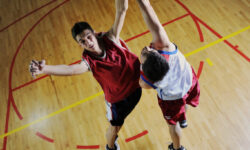Why team work pays off
One of the stand-out memories of the Rio 2016 Olympics was the moment when Great Britain’s women’s hockey team won gold. The team, led by coach Danny Kerry and captain, Kate Richardson-Walsh, beat the world number one team and reigning Olympic champions, the Netherlands, 2-0 in penalty shoot-out after the match was drawn at 3-3,
This was historic for the many reasons. It was the first gold medal that the Great Britain women’s team had won; it was the first gold medal for a GB women’s side in any team sport at the Olympics – rugby, basketball, handball, volleyball, football; it was a medal that helped propel GB to its best ever performance at an Olympic Games and it was the first gold medal match in men’s or women’s Olympic hockey where the goalkeeper has kept a completely clean sheet in a penalty shoot-out.
All part of the team
Speaking after the event, Kate Richardson-Walsh paid tribute to the team, not just the players on the pitch, but the reserve players, the support staff and coaching team. Delve a little deeper into the team’s preparations and you learn just how much of a team bond the GB hockey team have developed. They train together all year round at their home base at Bisham Abbey, many of the players share accommodation, when they travel to events they are in each other’s pockets 24/7. Over time, the players have got to know each other as people as well as purely team mates.
In the gym, in training session and during matches, these players have learnt which buttons to press to get the best out of each other and themselves. The results: the players push heavier weights; run faster sprints; hit the ball harder and put their bodies on the line to a far greater extent than in previous years and previous tournaments.
Rise to the challenge
We rise to the challenge when there are other people involved. Look at the success of boot camps, spin classes, boxercise sessions – if we are in a room with other people, all doing the same activity, then we work harder and push ourselves further. That principle applies to just about every activity – if the person next to you seems to be working harder, you will be spurred into putting in more effort yourself.
How many times have you been to the gym and sat on the exercise bike building up a mild sweat, or gone for a run and plodded the last two miles because going any further would just hurt too much? When you are with others, that pain just seems less intense, you just want to work harder.
Teamwork versus going solo
According to research quoted in Natural Health magazine, it has been shown that if we train together, we train harder and more often than when we go solo. We also burn more calories – 236 for group workouts, compared to 195 for the single brigade.
At Kelsey Kerridge there are heaps of opportunities for team training. Here are just a few:
Group circuits – particularly HITT workouts
Dance and high tempo classes such as Zumba and Spinning
Get a group together for a basketball session in the Sports Hall
Join up with other gym goers to create a regular group training session – if you have committed to meeting people at the gym you are far less likely to drop out.
And if you have a hankering to play a sport regularly, check out the local sports teams and go along to their training sessions. Hockey, rugby, netball, football – there are so many opportunities to get out there and really challenge your fitness levels to reach golden heights.







